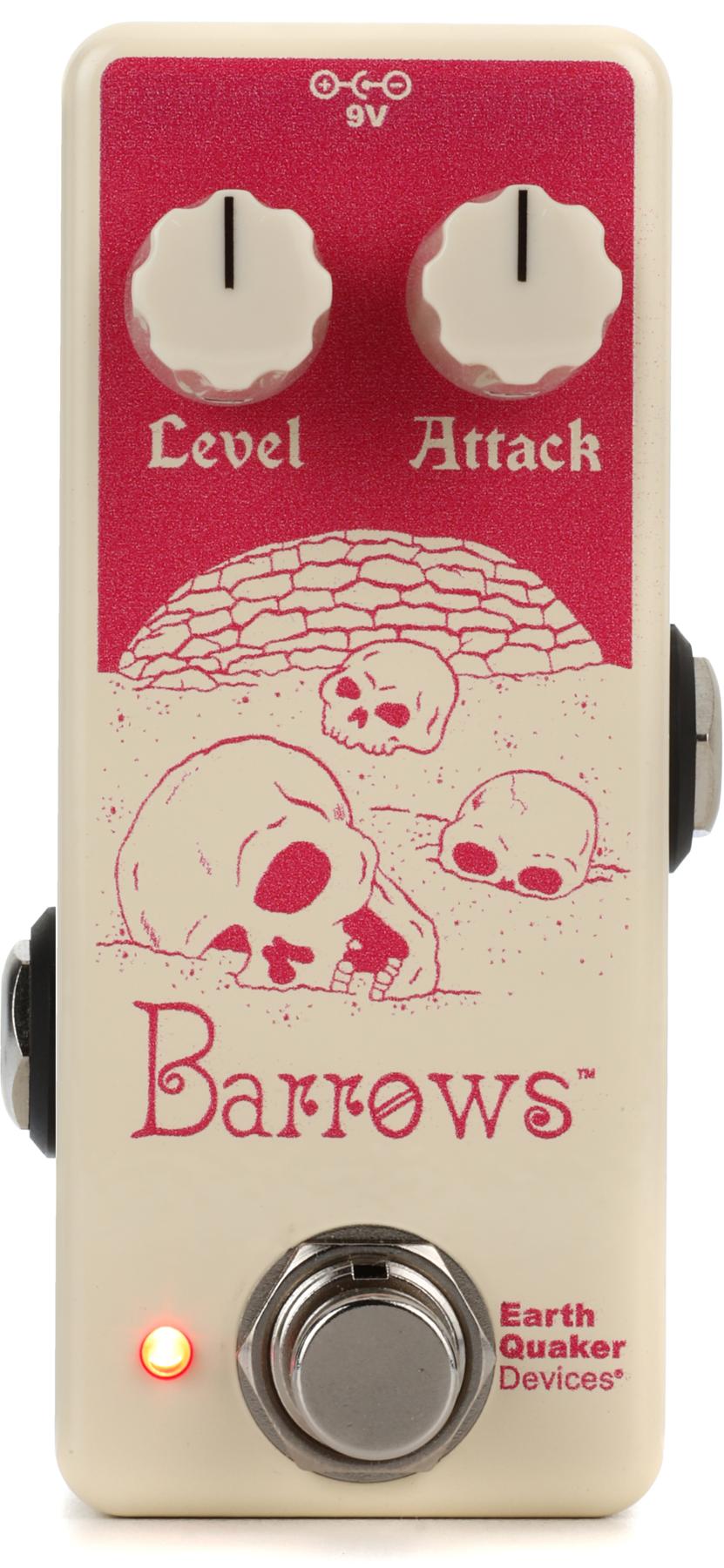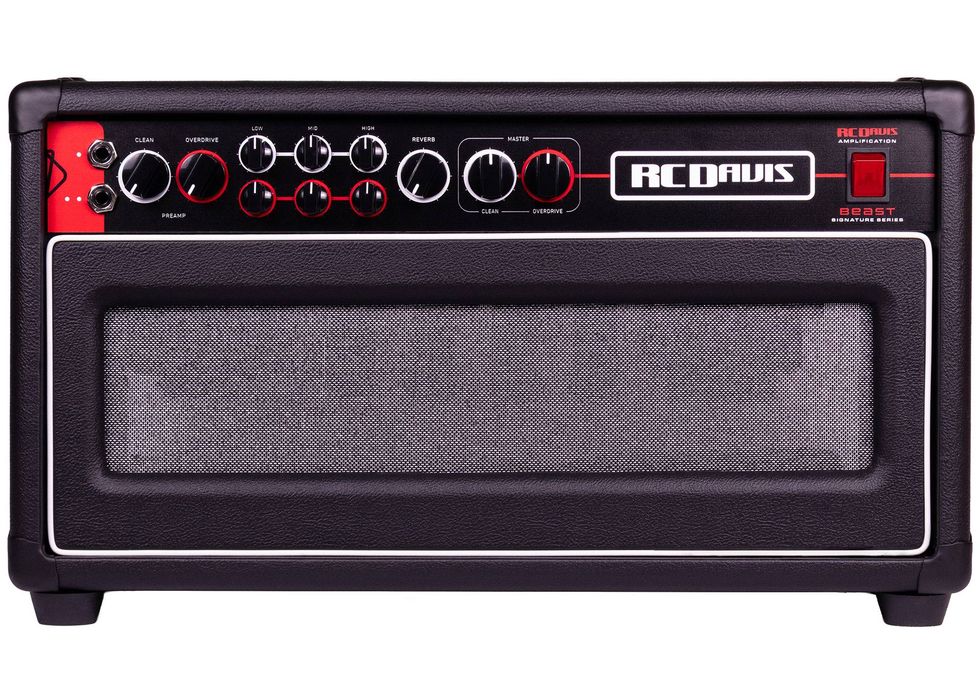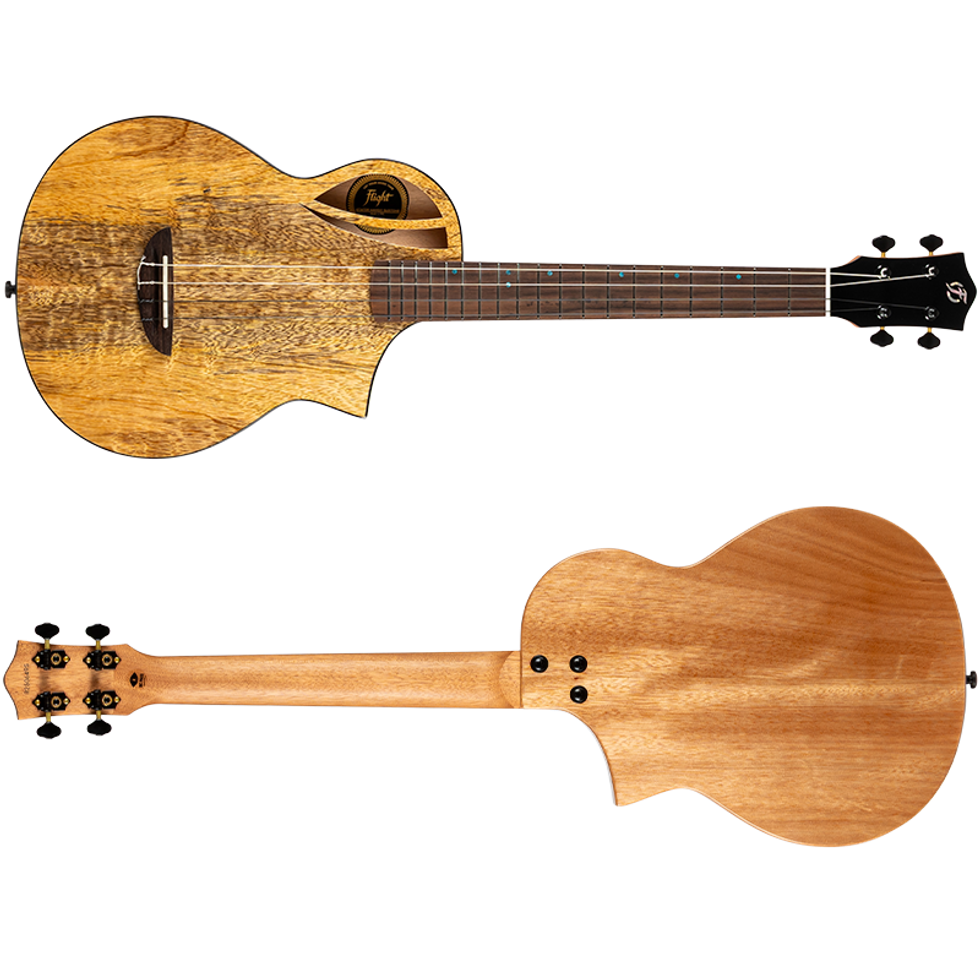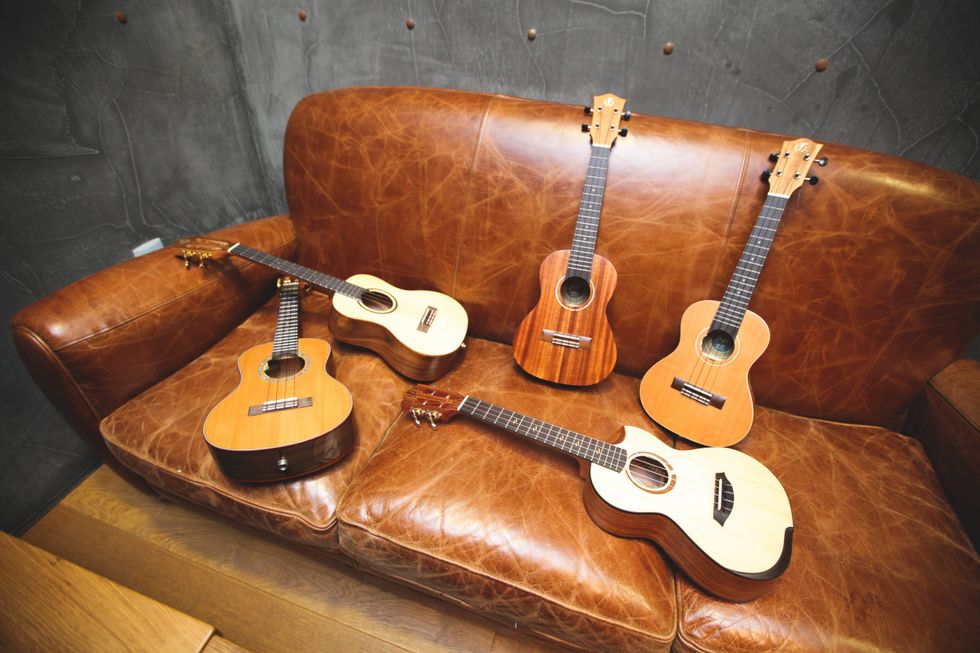
Let’s face it, many of us have bought a stringed instrument or three based largely on their looks. On one wall of my office, there’s a no-name copy of a Hofner Beatle Bass, not quite a real copy – somehow, there’s one f-hole – but it’s fun to look at, especially its 15-ply neck. And it cost less than a framed piece of art. Over the years, somebody pulled off the factory label – probably Kent or Kingston – to try and fool somebody else into thinking it was a real Hofner, or anything but a poor imposter.
Sometimes a recreation is a noble effort rooted in the spirit of tribute rather than cheap-thrill forgery or painstaking authentic replication. Among the companies keying in on this niche and carving out quite a reputation for blending modern appointments with retro cool is Eastwood Guitars.
Eastwood has turned out a slew of groovy tributes that can add nearly any kind of visual impact to your stage presence. Checking out their website will stir up memories of when you could go to a big department store, plunk down a Benjamin worth of scratch and head home with a new axe in its chipboard case. Many of us have fond memories of those old instruments (I miss my miss my baby-blue-with-vinyl-top-and-fake-speaker-grill Hagstrom bass) and thus, have a soft spot for these somewhat mutant creations.
Love At First Sight
| Like the look but play guitar? Check out our Eastwood Airline Map guitar review here. |
I was hooked the instant I saw an ad for Eastwood’s Airline Map bass – it’s Seafoam green, my all-time favorite color and yes, it’s shaped like a map of the United States with Florida and the tip of Texas cut off. It has a white deco headstock and pickguard. The routed edge pays homage to the original National fiberglass model. Even the hardshell case is retro with its black vinyl exterior and white piping.
The finish is smooth, shiny and deep, with the paint flowing nicely up to the binding. The neck fits snugly in the body pocket and the other details of the build are tidy, too.
How About Some Action?
The balance and weight? Pretty good! Not neck-heavy like I’d feared (it’s a 30.5” short-scale) and certainly easy on the shoulder at under 9 pounds. The neck was roundish on the back and comfortable in the hand. On first impression, it’s clear that the folks at Eastwood did their homework in putting together this Korean-made eyecatcher.
Moving along in my inspection, I got out my little metal ruler and measured string height. It measured only 2/32” at the octave – it takes at least 3/32” to make a bass playable for all but the lightest touch. And yes, the strings rattled a bit under moderate attack. The nut was cut correctly, though, and the neck relief was right on, too. Pickup height was in the ballpark. All that was really needed was to raise the strings 1/32” and it’d be ready to go (and of course, raising the pickups to compensate). This string height adjustment made the Airline nearly rattle free, while still a comfy player. Short scale basses are a bit harder to set up, because their strings are under less tension.
I should add that height adjustment was a little inconvenient. The two adjuster wheels on the bridge don’t have knurled sides, so adjustment must be done with a screwdriver. In addition, the strings need to be loosened before the wheels can turn freely, so string height is a bit experimental. Loosen strings, turn wheels, tighten strings, test. Rinse and repeat.
Time For The Ears
What about the Airline’s sound?
This little bass sports a pair of passive humbucking pickups, a 3-way pickup selector, and volume-volume-tone controls. I first played the bass through my home rig, an SWR Workingman’s 12, starting with my usual choice, the neck pickup. Pretty good. Full and round. A bit on low output side. The bridge pickup sounded similar, but brighter, not as deep, and not quite as loud – as expected, since the pickup is quite close to the bridge. The middle setting on the selector switch didn’t quite do it for me, with not much sound coming out. In all, the neck pickup is a decent choice, though.
After playing awhile, I wasn’t sure that this bass with its short-scale neck and chambered mahogany body was right for roundwound strings. Playing in the band would be the real test, I decided.
Voices In The Night
I set the Airline back in its case and planned to give it a second listen at practice. But while I was at work, the little bass started calling to me. “Gimme flatwounds… flatwounds,” it chanted. I thought nothing of it. A bass just can’t have telekinetic powers.
Or can it?
I got home that evening, and the Airline’s power over my mind grew stronger. “Flatwounds! Flatwounds!” it called out again.
Okay, whatever!
I dug out my box of old strings from various bass experiences. The dozen or so sets of strings were, as usual, a tangled mess. But I remembered that somewhere within there was a set of Thomastik flatwound bass strings I’d cut down for another short-scale bass project several years ago. These are low tension strings with an even response and warm top end. I yanked them out of the box, strung up the bass, and stuck my little ruler down on the neck again. One more tweak to raise the D and G strings just a bit.
I gave the Airline another listen.
Now, it was a different bass. Those Thomastiks gave it the old school warmth and plunk I was looking for. Nice attack and definition, better bottom end. Smoother sound. I still preferred the neck pickup over the bridge or combination of the two. But with the change of strings, I could imagine the possibilities.
I turned the tone control. Instead of just rolling off some highs, the voice of the bass actually seemed to change. Half way down, kinda fun – a muted sound from long ago. All the way down, really interesting – more nasally. Playing over the neck pickup brought out different voices than playing in-between the two pickups as well. It was an old-school funk machine!
I needed to test this new working hypothesis. Instead of the modern, hi-fi SWR, I went for my 1971 Fender Bassman Ten. You probably know what I’m talking about – a 50 watt tube combo powering four 10” speakers in a closed-back cabinet. Two channels, Bass/Normal and Bass/Studio. The Studio channel is the money input for bass. Yes, there it was. Old school funk – not too deep, not too bright, thick in the middle.
Okay!
Muddying The Waters
I put the Airline back into its case yet again and went off to band practice to see how it would perform under actual playing conditions. And got a surprise!
The strings that sounded so nice at home through the Bassman combo seemed a bit muddy against drums, guitar, and harmonica in our studio. Combine a mahogany body with a chambered body and that’s what you get – low-mid emphasis without a lot of top.
|
As the practice went on, I decided to change back to the original roundwound strings for more edge to the sound. That’s when I learned about another of the Eastwood’s features – the quick-change tailpiece. I haven’t seen something like this on a bass before. Essentially, you loosen a string a little and push it back. Out it pops from a slot under the tailpiece. To put a new string on, first hook the ball in the slot, poke the other end into a tuner, tighten ‘er up – and there you go!
I was able to change the whole set while the others were working out their parts on a new tune. Quick change, indeed!
In the mix, the Airline now had a bit of bite to its sound, but certainly not edgy. As we played together (the guitar was the matching Eastwood model!), our R&B tunes began to take on a new flavor. Sort of earthy and organic, a bit low-tech. Our singer dug it.
Wrapping Up
I’d have to say that if soda-fountain art deco is your style – and if you love green – the Airline might just have to join your stable of basses (but it does come in black or white, too, if your style is more low-key).
In all, it’s a funky sounding little thing, nice for blues, R&B, and roots music. But if you’re looking for an aggressive slapmeister or a bass for grindy metal, this bass isn’t it. Somehow, those funky, old short-scale designs take to the old stuff naturally, as if they were speaking to you in the night.




















